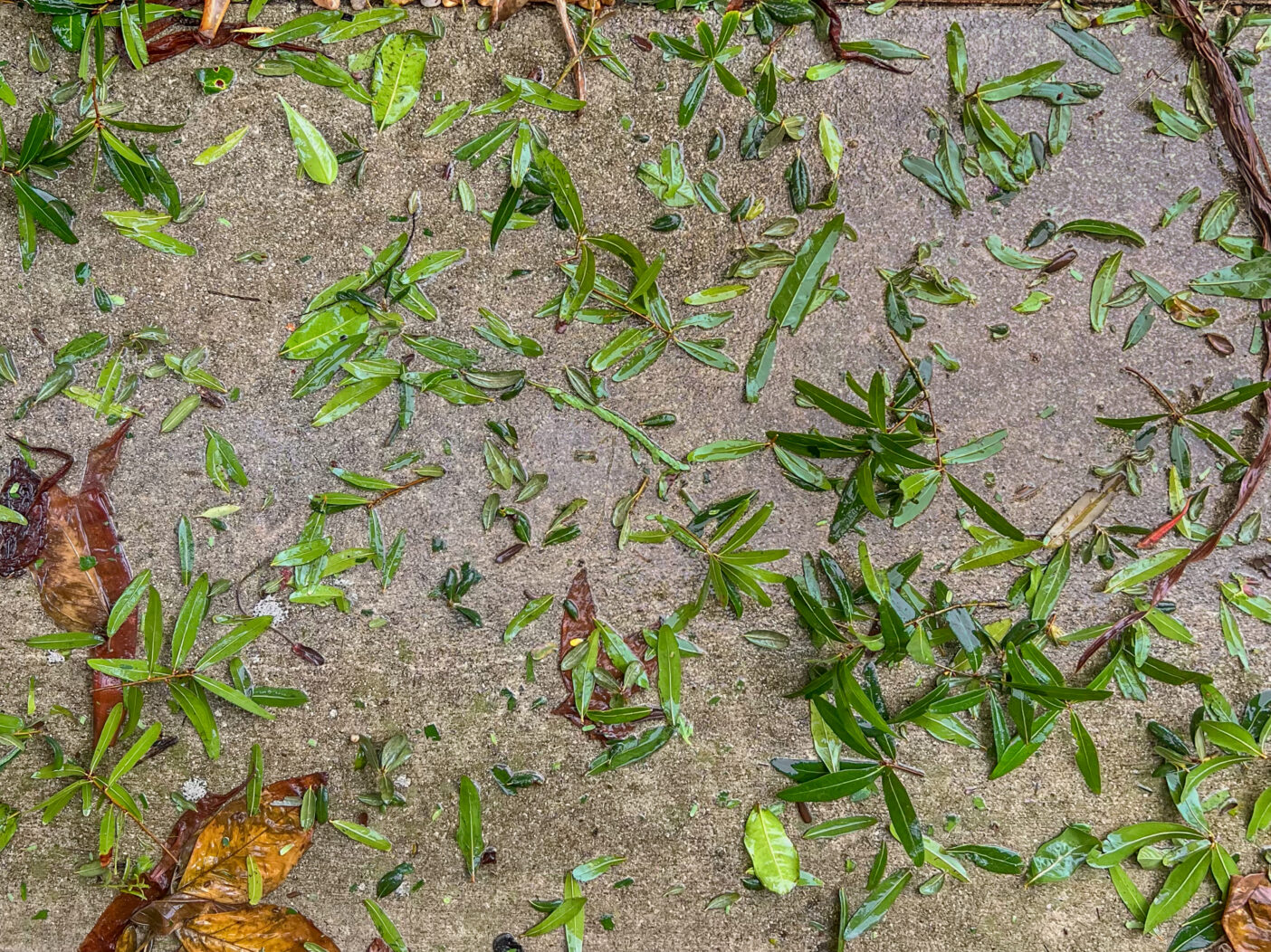
Put down your pruning shears! Surrender your saw!
The trees and shrubs in your yard may look dead in Hurricane Ian’s wake, but many of them are ready to spring back to life. The storm blew seawater as far east as Ave Maria, says Brian Galligan, the Garden’s Vice President of Horticulture. Leaves shriveled with their salty showers, giving Southwest Florida the look of a northern November.

Galligan offers 10 tips for how to heal your home landscape from salt and wind damage.
1. Resist the urge to prune. Doing so takes away some of the plant’s stored energy. Beneath the dead leaves are buds of new ones ready to flush. Allow plants or trees to defoliate naturally, and let nature run its course.
2. Speaking of fallen leaves, they are a natural fertilizer. Rake them underneath trees and shrubs, and then let them decompose and add nutrients to the soil. Your storm-stressed plants will thank you.
3. Avoid commercial fertilizers. Plants will fare better if you let them rebound slowly on their own.
4. Wash the salt away. Rinse plants’ above-ground portions as best as you can, and then give the area around their roots a good soaking to flush salt and other toxins from the soil. Don’t overdo it, though: You don’t want to create standing water. The plants have had enough of that lately!
5. Watch for signs of drought stress. Hurricane Ian dumped 10-plus inches of rain across the region, but for about a week after, the sky was cloudless, the humidity low, and plants began to recoil at the lack of moisture. We’ve had a few summer-like showers since, but you should monitor your landscape to ensure it is getting enough water.
6. Address broken branches. Scan your tree canopy to make sure there are no dangling limbs. Remove them safely if you can, or call an arborist for help.
7. Speaking of broken tree branches, if you notice jagged edges, make a clean cut. The wound will heal better that way.
8. Storm-battered plants are more susceptible to disease than healthy ones. Watch for signs of soil pathogens such as fungi that may cause leaf wilting. On new growth, monitor for pests like mealy bugs and scale. Don’t apply wide-spectrum pesticides as precautions; rather, wait until you can confirm an infestation, and then target only the culprit.
9. If you can tolerate the remnants of a dead tree in your yard and it doesn’t pose a hazard, let it be. These “snags” provide great habitat for birds, small mammals, and other wildlife.
10. Replant! Some homeowners may be wary of planting new trees after Ian knocked down so many. But a lush landscape is far more resilient than a barren one. Look for trees that are native to South Florida or the Caribbean. They are adapted to our soil types, weather patterns, and temperature range and likely to flourish and hold up to the next big storm. More than anything, early growing practices matter. We recommend planting smaller trees rather than installing big ones that have spent years in pots. Your patience will be rewarded with a stronger root system. Regardless of size, be sure to loosen roots before you put a new tree into the ground. They will not spread well if they are bound into a ball. Water your new tree right away to remove air pockets, but don’t overwater it in the days to come.


